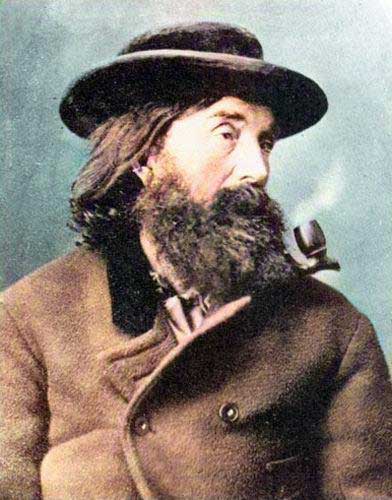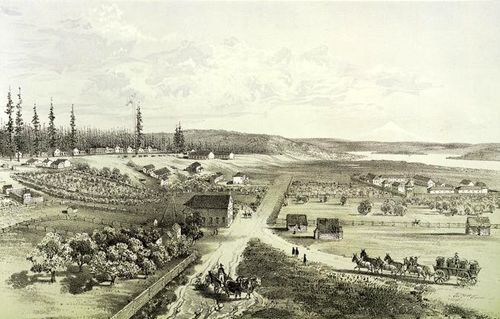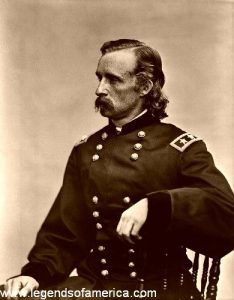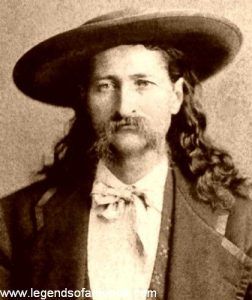Moses Embree Milner, also known as California Joe, was a mountain man, miner, and army scout.
Milner was born in Stanford, Kentucky, on May 8, 1829. He left home when he was just 14 years old and headed west to become a mountain man. He soon went to St. Louis, Missouri, where he joined a party of fur trappers headed for Fort Laramie, Wyoming. The youngest of the group, he would learn quickly. A year later, he would be with a group of American Fur Company trappers out of Fort Laramie when they tangled with Blackfeet warriors camped by the Powder River. He was said to have killed three of the warriors in the battle.
The adventurous young man was described as a colorful character who was large in stature, with unkempt long hair and a heavy red beard, who usually had a black sombrero and a briar pipe in his mouth. Usually, he preferred riding a mule to a horse and was rarely without his plains rifle. He was an overly talkative and humorous storyteller, had a penchant for drink, and would later be described, by none other than George Custer, as a “dingy-looking briarwood.”
When the Mexican-American War erupted in 1846, he was working as a scout for General Stephen W. Kearny and Colonel Alexander W. Doniphan.
After the war, he was reportedly captured by Ute Indians in 1849 but soon escaped. Milner returned home on his 21st birthday, where he married 13-year-old Nancy Watts, with whom he would have four children. The couple honeymooned by crossing nearly 2,000 miles of prairie and mountains in a wagon trip to prospect for gold in California. Though he wouldn’t spend much time there, it was here that he earned the nickname of “California Joe.” He was moderately successful and, in 1853, established a 645-acre cattle ranch near Corvallis, Oregon.
Domestic life, however, did not suit Milner and leaving his wife to run the ranch, he was soon off adventuring. He first headed to Fort Vancouver on the Columbia River, where he met West Point graduate Lieutenant Philip H. Sheridan, who gave him a contract to supply wood for the fort. He prospected in Washington and Montana before heading to the goldfields of Idaho. There, he filed a claim near Grangeville and built a log cabin at a spot he named Mount Idaho. Because of miners trekking through rough terrain between there and Florence, a gold rush boomtown, he Blazed the Milner Trail, where he charged both men and animals a toll of a dollar a head.
He then traveled throughout the country, during which time it was said he killed several men — a claim jumper in Bannack, Montana; another in Virginia for kicking Milner’s dog; and one in Texas.
By the mid-1860s, California Joe was in Colorado, where he allegedly witnessed the Sand Creek Massacre when 700 members of the Colorado Territory militia destroyed a village of friendly Cheyenne and Arapaho, killing and mutilating some 160 Indians, two-thirds of them women and children.
By 1866, Joe was in Kansas, and between September 1868 and April 1869, he was a scout attached to Fort Harker, but there is some evidence that he was at Fort Riley, Kansas, in 1866-67. It was here that he probably first met Wild Bill Hickok. The pair, no doubt, hit it off as Joe was one of the great rifle shots of the Plains, whereas Wild Bill was noted for his skill with a pistol.
In 1867, he acted as a U.S. Army scout for Lieutenant Colonel George A. Custer on General Winfield S. Hancock’s expedition of 1867. Also scouting was his friend Bill Hickok. In 1868-69 he was scouting for the Sheridan-Custer winter campaign. After the Battle of the Washita, Milner and a man named Jack Corbin traveled 100 miles in two days through hostile territory to report the results to General Phillip Sheridan at Camp Supply, Oklahoma. The overly-talkative and friendly scout soon became a favorite of George Custer, who promoted him to chief scout. However, Milner had a problem with alcohol and was quickly demoted after he over-celebrated his promotion. Despite this, Custer and Milner remained friends and occasionally exchanged letters.
Later, in February 1870, while guiding his old friend General Sheridan from Fort Arbuckle to Camp Wichita, he got so drunk that he had to be bundled into a wagon to complete the journey. Though Sheridan was furious, Joe retained his position.
In the early 1870s, Milner returned to prospecting and ran a cattle ranch near Pioche, Nevada. In 1875, he joined the Newton-Jenney expedition to confirm Custer’s reports of gold in the Black Hills of the Dakotas. They found gold, and soon there was a flood of prospectors. This infuriated the Sioux Indians, who had been promised protection of their sacred land, and two years later, they would get their revenge at Little Big Horn.
Afterward, he staked out a home site near Rapid City, South Dakota, where he continued to act as a scout to both military expeditions and civilian outfits. In May 1876, he, along with Captain Jack Crawford and five other troops, ambushed a party of Lakota Sioux, reportedly killing 15 out of a party of 23 warriors.
In the summer of 1876, he was in Deadwood, South Dakota, while Bill Hickok was in residence. When Jack McCall murdered Wild Bill, Joe was out hunting Indians. Upon his return, he learned of Hickok’s death and, with a rifle in hand, personally went looking for the murderer. However, McCall had fled the vicinity. Only days before, Wild Bill had been heard saying he had “two trusty friends: one is my six-shooter, and the other is California Joe.”
By the Fall, Joe was back on the Plains and headquartered at Fort Robinson, Nebraska, working for General George Crook’s 5th U.S. Cavalry. On October 29, 1876, at the sutler’s store, he got into an argument with a man named Tom Newcomb, an employee in the post’s butcher shop. Both men pulled their pistols, but Joe persuaded Tom to put up his “darn gun” and have a drink. Later, however, as Joe stood talking to friends, Newcomb shot him in the back. California Joe was 47 years old. Although arrested, Newcomb was not charged and, once released, disappeared.
Milner was buried with full military honors in the post cemetery at Fort Robinson. Later the remains at the Fort Robinson cemetery were removed to Fort McPherson National Cemetery in Maxwell, Nebraska. Though there is a marker at Fort McPherson, his actual remains were never found.
Other frontier characters that he befriended during his life of adventure included Calamity Jane, Jim Bridger, Kit Carson, and Buffalo Bill Cody, who would say of him, “They needed not only a fearless but a tried, wary, cunning, reliable guide and California Joe was all of these.”
© Kathy Alexander/Legends of America, updated May 2023.
Also See:
Adventures in the American West
Sources:
Coeur d’Alene Post Falls Press
National Park Service
True West Magazine




